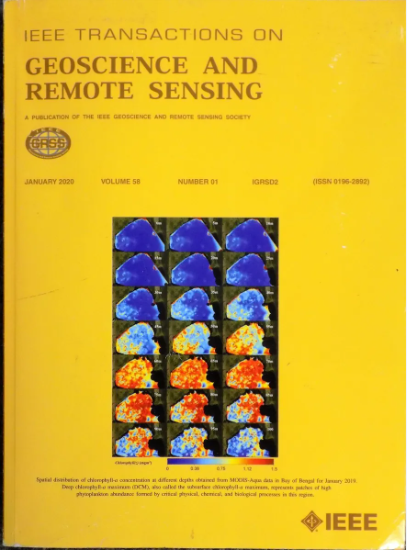CloudFU-Net: A Fine-Grained Segmentation Method for Ground-Based Cloud Images Based on an Improved Encoder–Decoder Structure
IF 8.6
1区 地球科学
Q1 ENGINEERING, ELECTRICAL & ELECTRONIC
IEEE Transactions on Geoscience and Remote Sensing
Pub Date : 2024-04-15
DOI:10.1109/TGRS.2024.3389089
引用次数: 0
Abstract
The segmentation of ground-based cloud image is a crucial aspect of ground-based cloud observation, with significant implications for meteorological forecasting, photovoltaic power prediction, and other related tasks. At present, the proposed method of ground-based cloud image segmentation only separates cloud from the sky background without further classifying the cloud categories. Clouds have rich fine-grained semantic features, and different types of clouds have different effects on solar irradiance, which in turn has different effects on photovoltaic power. In this article, a fine-grained segmentation method for ground-based cloud images is proposed, which is based on an improved encoder–decoder structure named CloudFU-Net. First, a ground-based cloud image fine-grained segmentation dataset for photovoltaic power prediction is constructed, and the clouds are divided into five categories with different colors under the guidance of meteorologists. Second, selective kernel (SK) is introduced in the CloudFU-Net encoder to better capture cloud of different sizes. Then, a parallel dilated convolution model (PDCM) is proposed to segment small target clouds more accurately. Finally, a content-aware reassembly of features (CARAFE) is introduced into the CloudFU-Net decoder to replace the original interpolating upsampling to better recover fine-grained semantic features. Finally, the experimental results show that the proposed CloudFU-Net has the best segmentation performance compared with other segmentation models, with Miou reaching 61.9%, which can efficiently segment different cloud genera and lay a solid foundation for accurate prediction of photovoltaic power.CloudFU-Net:基于改进的编码器-解码器结构的地面云图像精细分割方法
地基云图像分割是地基云观测的关键环节,对气象预报、光伏发电预测及其他相关任务具有重要意义。目前,所提出的地面云图像分割方法只是将云从天空背景中分离出来,而没有对云的类别进行进一步的分类。云具有丰富的细粒度语义特征,不同类型的云对太阳辐照度有不同的影响,进而对光伏发电有不同的影响。本文基于一种名为 CloudFU-Net 的改进编码器-解码器结构,提出了一种地面云图像细粒度分割方法。首先,构建了用于光伏发电预测的地面云图像细粒度分割数据集,并在气象专家的指导下将云划分为五类不同颜色的云。其次,在 CloudFU-Net 编码器中引入选择性核(SK),以更好地捕捉不同大小的云。然后,提出了并行扩张卷积模型(PDCM),以更精确地分割小目标云。最后,在 CloudFU-Net 解码器中引入了内容感知特征重组(CARAFE),以取代原来的内插上采样,从而更好地恢复细粒度语义特征。最后,实验结果表明,与其他分割模型相比,所提出的CloudFU-Net具有最好的分割性能,Miou达到61.9%,可以高效地分割不同的云属,为准确预测光伏发电量奠定了坚实的基础。
本文章由计算机程序翻译,如有差异,请以英文原文为准。
求助全文
约1分钟内获得全文
求助全文
来源期刊

IEEE Transactions on Geoscience and Remote Sensing
工程技术-地球化学与地球物理
CiteScore
11.50
自引率
28.00%
发文量
1912
审稿时长
4.0 months
期刊介绍:
IEEE Transactions on Geoscience and Remote Sensing (TGRS) is a monthly publication that focuses on the theory, concepts, and techniques of science and engineering as applied to sensing the land, oceans, atmosphere, and space; and the processing, interpretation, and dissemination of this information.
 求助内容:
求助内容: 应助结果提醒方式:
应助结果提醒方式:


